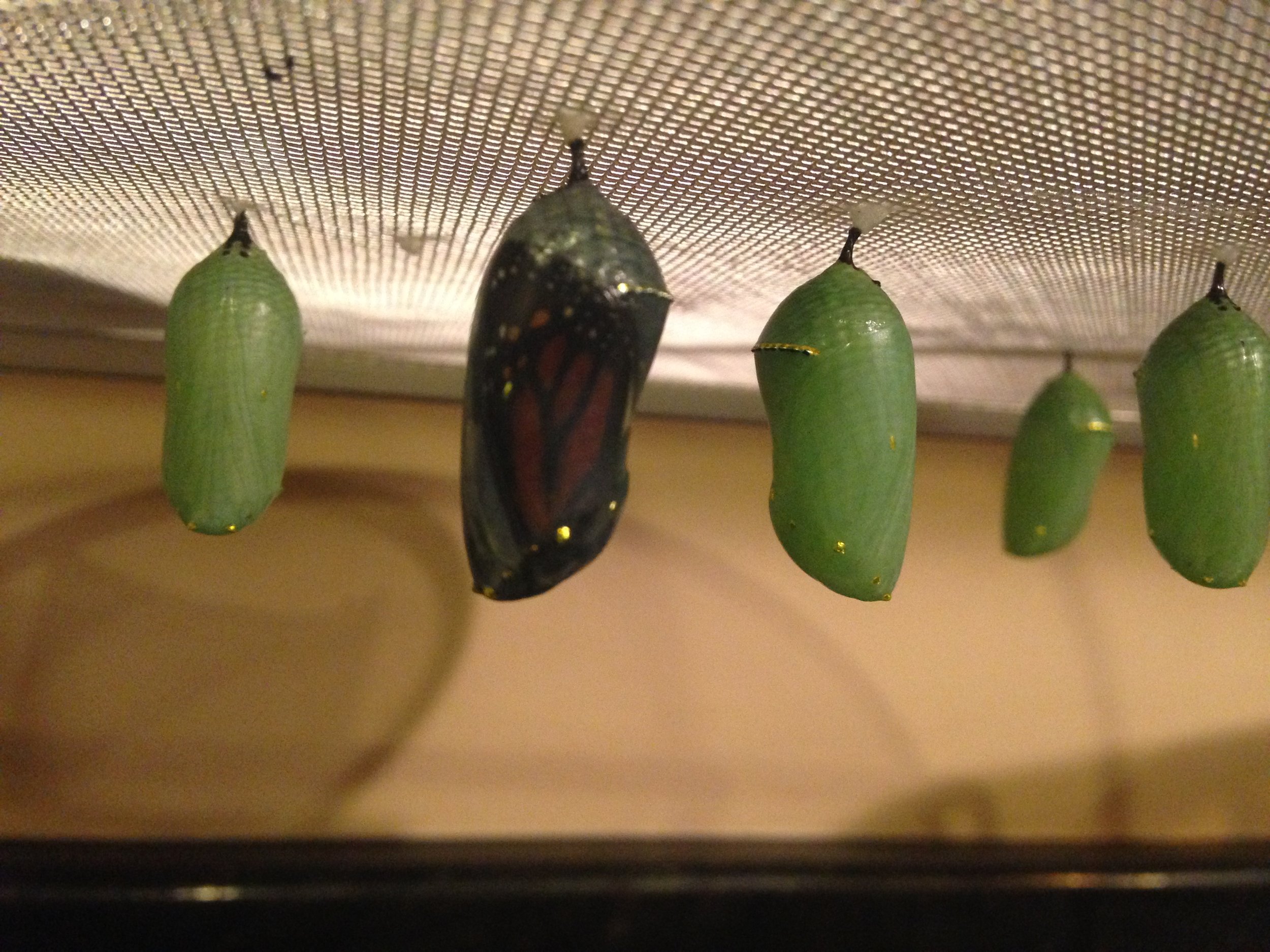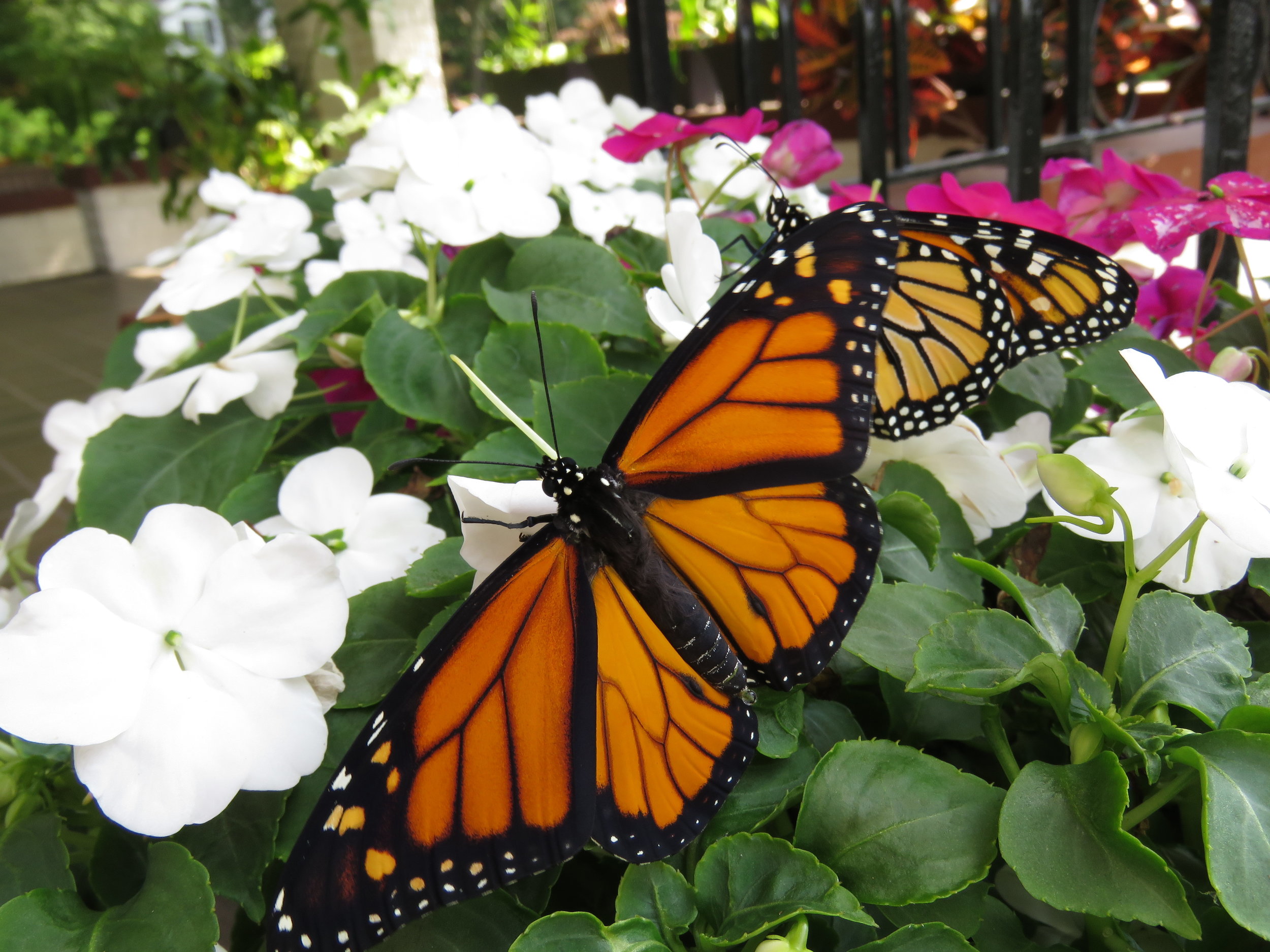Monarch Mania
Dozie Herbruck
Monarch butterflies were everywhere in Cleveland this summer! I have been raising Monarchs for years and have never seen as many as I have seen this year. I'm hearing the same story from many other butterfly lovers. Every time I checked my milkweed patch I would find either eggs or caterpillar babies, and every time I cut a branch of milkweed to feed the caterpillars, I brought in more eggs and the cycle began all over again. This summer I have released more than 35 butterflies, and have given several caterpillars away to neighbors and friends. At one time I had so many caterpillars that they depleted my milkweed and I had to resort to the 'midnight nursery!' I have been busily harvesting milkweed seeds in order to enlarge my patch next summer. A fascinating hobby! (see below for photos)
From Maine, Linda Paine sent the following information about Monarchs from Downeast Audabon, originally published by journeynorth.org. It is a very interesting explanation of the Monarch's life cycle. As in Cleveland, Maine reports a very successful breeding season this summer. Let's hope that bodes well for the butterfly (and the rest of the planet as well). Plant milkweed!
Monarchs Are on the Move
The season is off to an impressive start. Overnight roosts - a classic sign of fall migration - have already been reported from 6 states and 1 province. The first was seen on August 11th (one of our earliest dates ever), 17 sites have been found, and three sites have contained 1,000 butterflies. Numbers this high and this early are a promising sign of a successful breeding season. Get ready for an eventful fall migration!
Monarchs Are Changing
Monarchs are changing dramatically at this time of year, in physiology and in behavior. They are:
1. Becoming Migratory
Watch for signs of migratory monarchs:
flying in directional flightclustering in overnight roostsnectaring intensely
2. Responding to Daylength
Declining daylength (photoperiod) is a central cue that triggers the monarch’s migratory state. In the northern breeding range, photoperiod is falling by 20 minutes this week.
3. Emerging in Diapause
Beginning in mid-August in the north, adults are in diapause when they emerge from the chrysalis. They are full grown — but not reproductively mature. Their reproductive development is on pause. These monarchs will not complete development and begin to mate until next spring in Mexico.
4. Beginning a Long Life
The same hormone deficiency that leads to diapause also leads to increased longevity. Breeding monarchs live only 2-6 weeks; migratory monarchs live up to 8 months.
5. Accumulating Fat
Monarchs are shifting focus now from breeding to intense feeding. They must build body fat to fuel migration and to survive the winter in Mexico.
Monarch Life Cycle in Photos
(Click to enlarge and scroll through photos; hover over photo to read caption)















